Zen Meditation
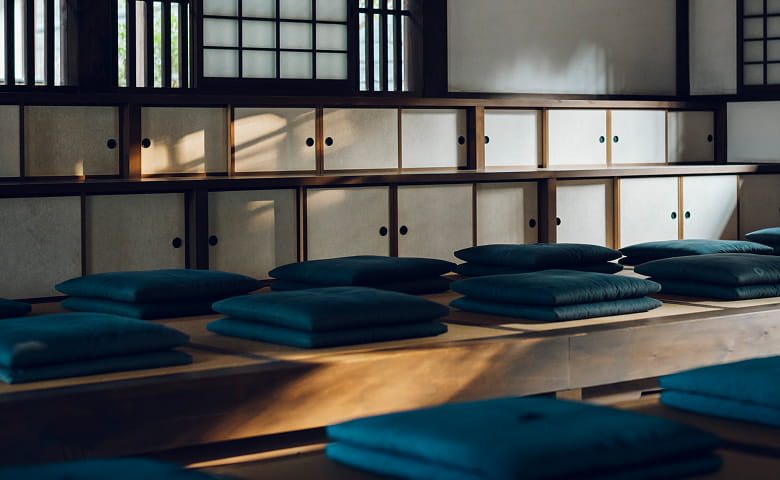
Awakening to your true self
Since the Meiji era, Enkouji Temple has been Japan's only Zen training hall specializing
in training Buddhist nuns. The Zen hall from that time still exists, and seated Zen meditation sessions are held in
the early morning every Sunday. A seated session is composed of four parts: a seated meditation, temple chores, a
Zen lecture, and breakfast.
The aim of seated meditation is to unify the body and mind. Participants are asked to focus on their breathing,
calm their minds, search deep in their souls, and then try to attain the state of “nothingness.”
When you feel an appreciation of the seasons and nature in this quiet place, noticing the rustle of leaves, a
flickering light, a gentle breeze and birdsong, this experience will purify your mind.
Easy-to-understand guidance is offered for beginners, so why not try to seek "nothingness" in silence?
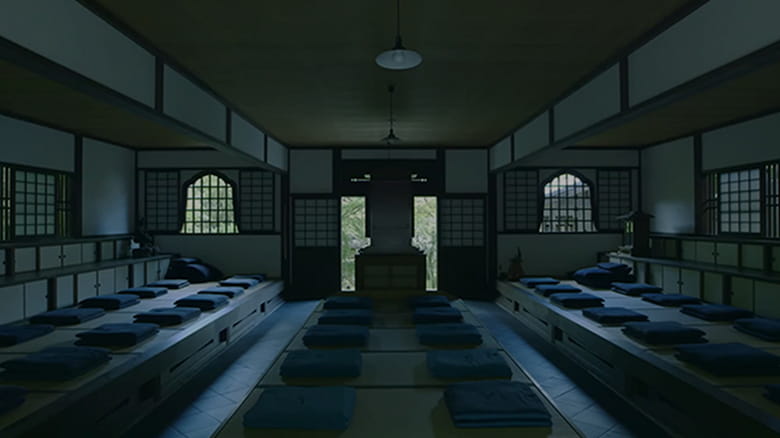
Session details
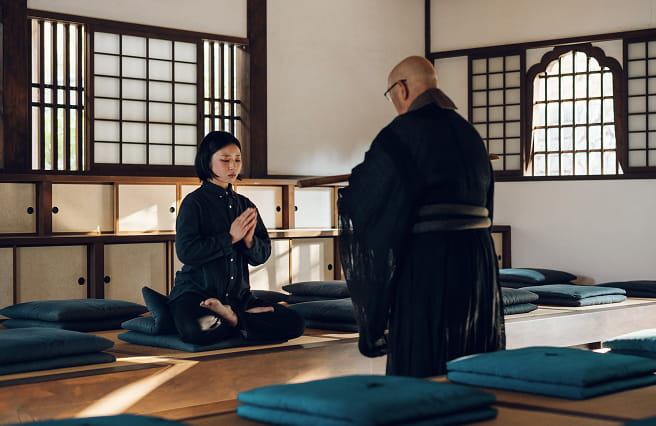
Seated Zen meditation
From the Meiji Era until recently, Enkouji Temple has been Japan’s only training hall for Buddhist nuns. Seated Zen meditation sessions still take place in the Zen hall where the nuns actually practiced meditating at that time. Beginners are given easy-to-understand tips on ways to sit and breathe, so please feel free to join in.
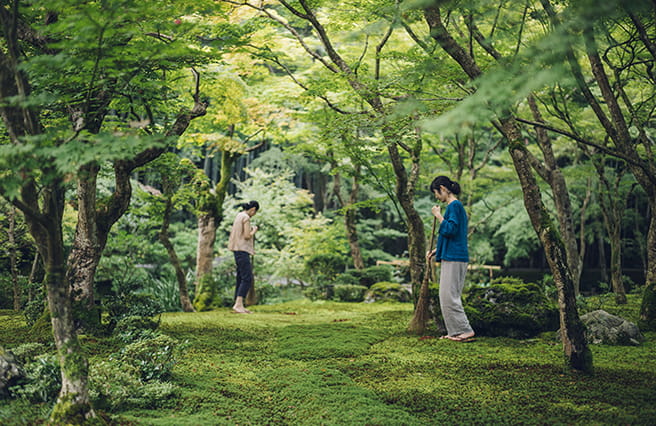
Temple chores
After seated meditation, participants weed and sweep the temple
precincts.
Seated meditation (zazen) is considered “meditation in stillness,” while doing physical labor (samu) is considered
“meditation in movement.” Both seated meditation and physical labor, in which participants immerse themselves in
mindful practice, are important in the world of Zen.
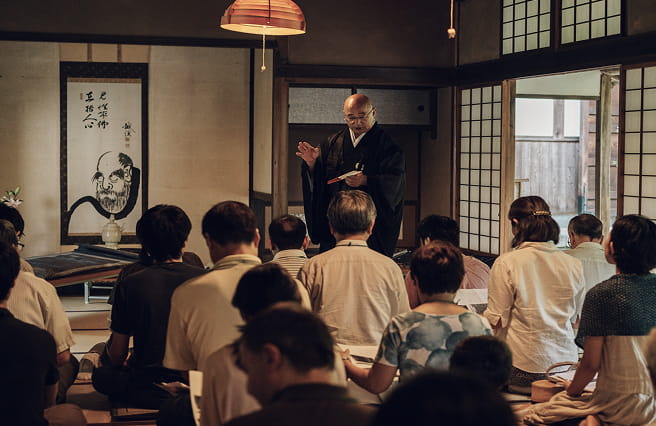
Zen lecture
Participants move to the Zuiunkaku Hall and the head monk gives easy-to-understand lectures on Zen principles. Here, participants can see Japan’s oldest woodcut printing blocks used for publishing Enkouji-edition books. Participants are expected to reflect on the meaning of physical labor and their daily behaviors, and learn about the spirit of Zen.
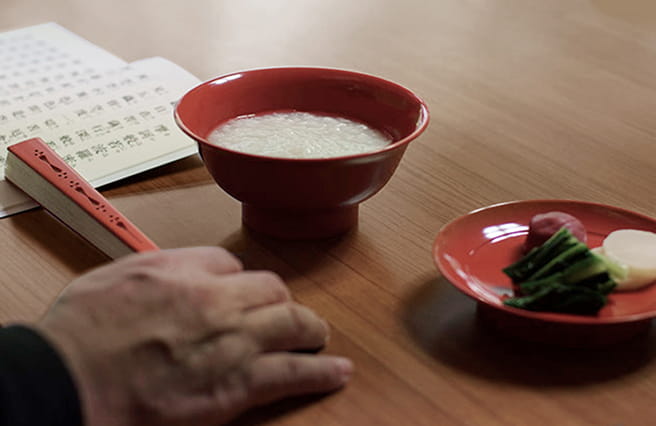
Breakfast
The Zen monk's breakfast (rice porridge and pickles) is served. We look at our food, and appreciate how much time and effort went into making it ready for us. We eat quietly and without making a sound, while appreciating each bowl of rice porridge and reflecting on whether we are worthy of it.